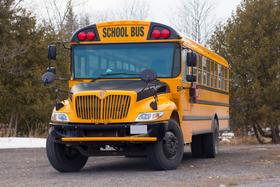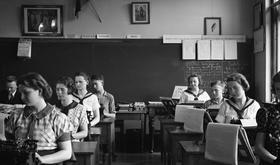For the 2025-26 school year, there is 1 public preschool serving 32 students in 57066, SD.
Public preschools in zipcode 57066 have a diversity score of 0.12, which is less than the South Dakota public preschool average of 0.54.
Minority enrollment is 6% of the student body (majority Hispanic), which is less than the South Dakota public preschool average of 34% (majority American Indian and Hispanic).
Best 57066, SD Public Preschools (2025-26)
School
(Math and Reading Proficiency)
(Math and Reading Proficiency)
Location
Quick Facts
Rank: n/an/a
1404 Fir St
Tyndall, SD 57066
(605) 589-3389
Tyndall, SD 57066
(605) 589-3389
Gr: PK | 32 students Student-teacher ratio: 16:1 Minority enrollment: 6%
57066, South Dakota Public Schools (Closed)
School
Location
Quick Facts
31232 The Colony Rd
Tyndall, SD 57066
(605) 589-3387
Tyndall, SD 57066
(605) 589-3387
Gr: 9-12 | 4 students Student-teacher ratio: 4:1
Frequently Asked Questions
How many public preschools are located in 57066, SD?
1 public preschools are located in 57066, SD.
What is the racial composition of students in 57066?
57066 public preschools minority enrollment is 6% of the student body (majority Hispanic), which is less than the South Dakota public preschools average of 34% (majority American Indian and Hispanic).
Recent Articles

10 Major Challenges Facing Public Schools in 2025
Explore the 10 biggest challenges facing U.S. public schools in 2025, from funding shortages to mental health and technology gaps.

Broward County School Bus Service Update 2025
A 2025 review of Broward County public school bus service: challenges, innovations, and what parents should know.

Failures of U.S. Public Education in 2025
Explore the 15 biggest failures of the American public education system in 2025, with updated data, expert insights, and real-world examples.
